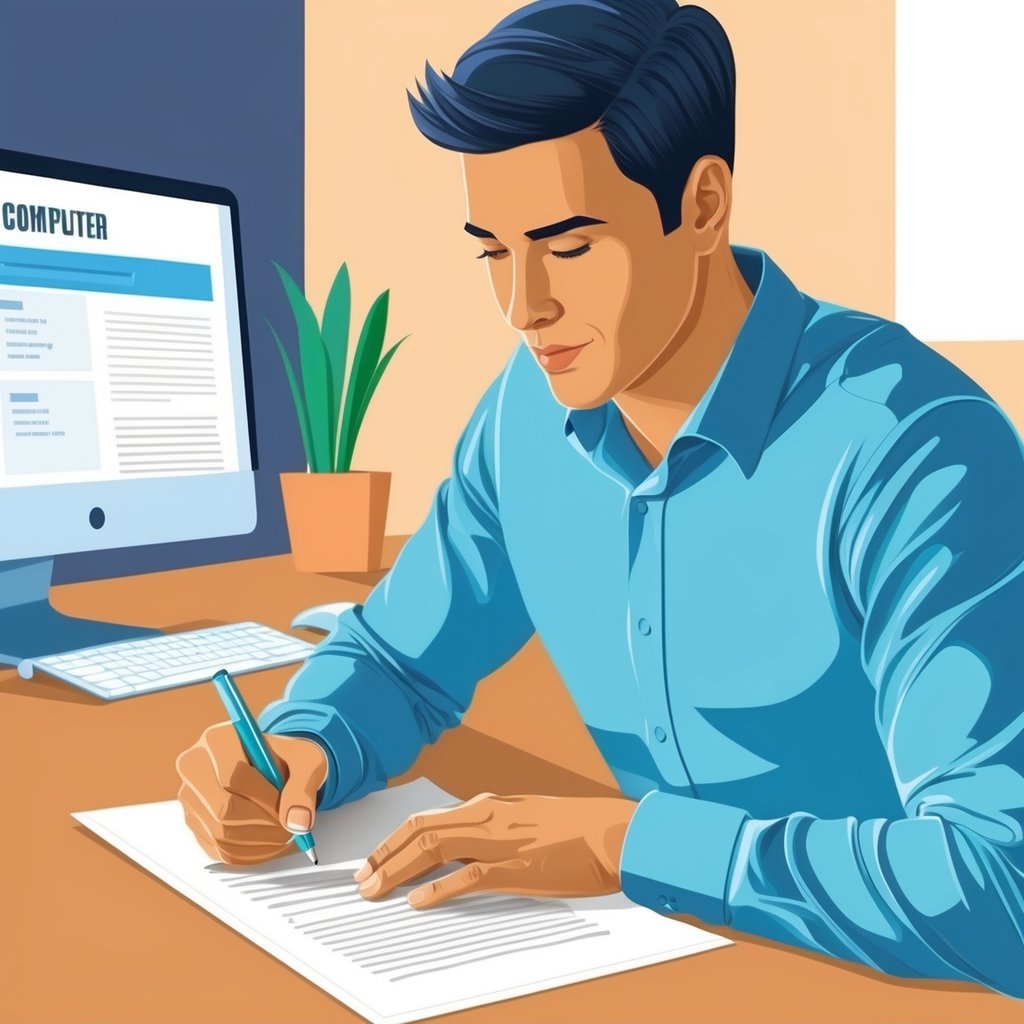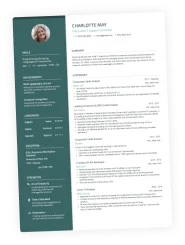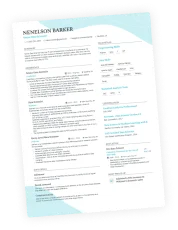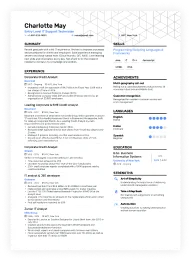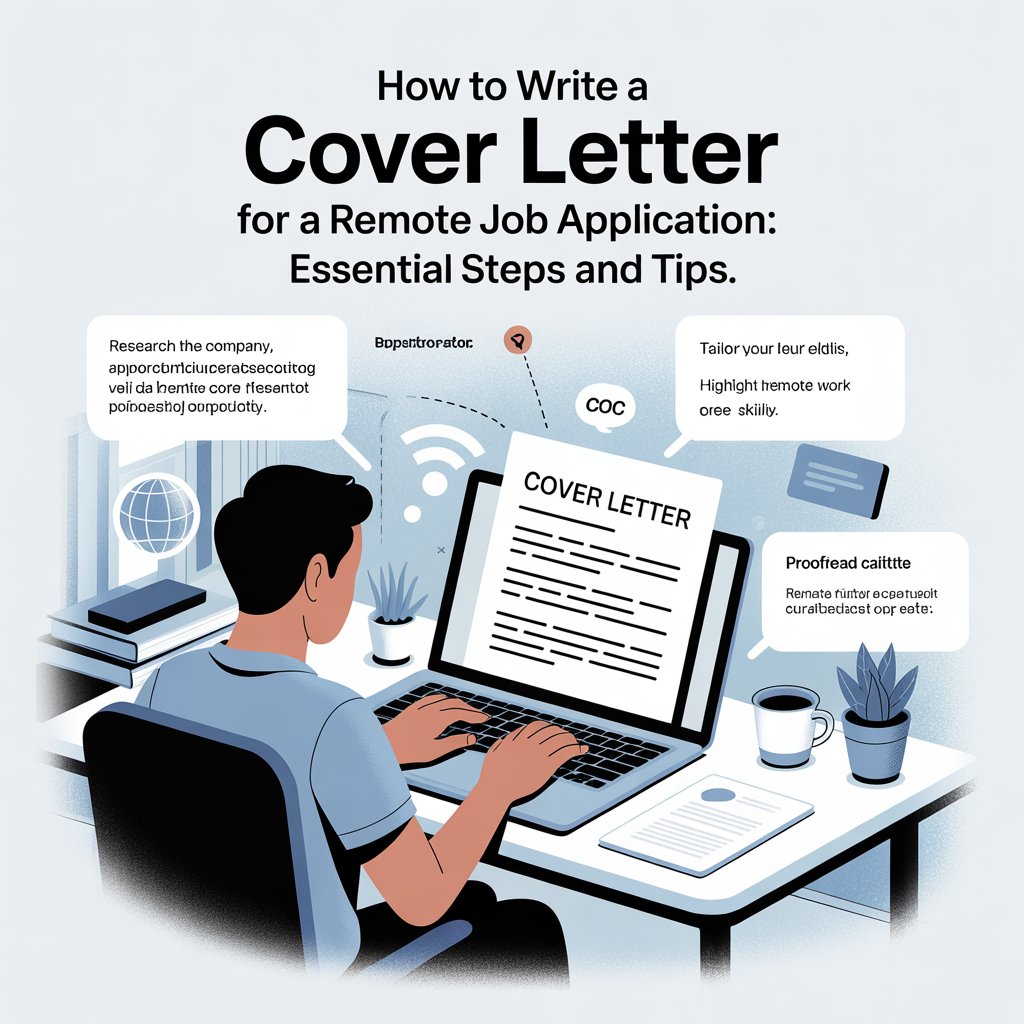A cover letter is usually the first thing an employer sees in your job application. A strong cover letter gives real examples of your skills, lets your personality peek through, and explains why you’re a good fit for the role. This document isn’t just a formality—it’s your chance to stand out and make a memorable impression.

Writing an effective cover letter means actually tailoring it to the job and company. Before you even start typing, it’s smart to read the job description carefully and dig into what the company is all about. That way, you can highlight the skills and experience that matter most to them. There’s plenty of advice on how to make your cover letter fit the role and match the workplace vibe—Indeed has some solid tips.
A good cover letter doesn’t need to be fancy. Just introduce yourself, mention the job you want, and share a couple reasons why you’d be a great addition to their team. It’s pretty standard to end with a polite nudge for an interview, and you can find real cover letter samples if you want examples.
Key Takeaways
- Your cover letter should actually reflect the job and company.
- The best ones highlight your most relevant skills and experience.
- Personalizing each letter can really boost your chances.
Understanding the Purpose of a Cover Letter
A cover letter is a big deal in any job application. It’s your shot to show genuine interest, point out your strengths, and explain why you’re the right person for the job.
How Cover Letters Complement a Resume
A cover letter gives context your résumé just can’t. Sure, your résumé lists your jobs, education, and skills, but the cover letter is where you get to say why any of it matters for this particular job.
It’s a chance to speak directly to the employer, explaining how your background fits what they’re looking for. You can show some enthusiasm for the company’s mission and touch on things that don’t really belong in a résumé. Maybe you switched careers? The cover letter is the place to talk about why.
Always tailor your cover letter to the job posting. It shows you’ve put in the effort to understand the company and the role. Including keywords or matching skills from the job listing—Indeed’s guide covers this—can help your application rise to the top.
Key Differences Between Cover Letter and Résumé
A résumé is pretty structured. It’s a summary of your work history, education, and skills—lots of bullet points. The cover letter, though, is more like a letter (obviously): you get to explain why you want the job and how you’ll add value.
Cover letters let you talk about your goals, motivation, or special achievements in more depth. The résumé is all about what you’ve done; the cover letter explains why it matters for this particular job.
The résumé’s main job is to show your qualifications quickly. The cover letter, as Furman University points out, is there to connect those qualifications to what the company actually needs—and, ideally, land you an interview.
Researching the Position and Organization
Getting a grip on the job requirements and what the company expects helps you write a cover letter that actually lands. Doing your homework makes your application pop and shows attention to detail.
Analyzing the Job Description
Start by reading the job description closely—don’t just skim. Look for the main skills, responsibilities, and qualifications they’re after.
It can help to make a quick table of main requirements and match them to your own skills:
| Job Requirement | Applicant Skill/Experience |
|---|---|
| Team leadership | Led a group project in school |
| Data analysis | Experience with Excel and Python |
| Written communication | Wrote articles for the school paper |
Highlight keywords like the job title or technical skills. If they keep mentioning “project management,” you’ll want to mention your own experience with that—using their language. Guides like this one can help you spot what’s most important. Focus your letter on matching as many of those must-haves as you honestly can.
Investigating the Company Culture
Digging into a company’s culture shows you care about where you work. Check out their website, social media, or employee reviews.
Look for clues about the work environment, mission, and values. Sometimes they’ll spell out what makes them different from competitors. If you can mention shared values or goals in your cover letter, it feels a lot more personal.
If you’re going for a research or academic job, pay attention to whether the group likes collaboration, independence, or creative thinking. Mentioning your own experience with these can show you’d fit right in.
Identifying the Hiring Manager
Getting the right name on your cover letter does make a difference. First, check the job post for a contact. If there’s nothing, try the company’s staff page, LinkedIn, or just call the main office.
Use the hiring manager’s title and make sure you spell their name right. If you really can’t find it, use a specific job title like “Dear Marketing Manager,” instead of something generic.
Personalizing your greeting shows you care enough to do a little digging. That kind of effort stands out.
Structuring Your Cover Letter
A cover letter that’s easy to follow shows you can communicate well and pay attention to details. Getting the structure right helps you make your case without rambling.
Salutation and Contact Information
Start with your contact info at the top—name, address, phone, email. Then the date, and the recipient’s info: hiring manager’s name, job title, company, and address.
For the salutation, “Dear [Hiring Manager’s Name],” is best. If you don’t have a name, skip “To Whom It May Concern.” Go for “Dear Hiring Manager” or mention the department. Double-check the job post or company site—personalized greetings show you’re paying attention.
Introductory Paragraph
This first paragraph is where you say which job you’re after and where you found it. Mention how you spotted the listing—company site, job board, maybe a referral.
Show some excitement and quickly introduce your background or experience that fits the job. The idea is to catch their attention. Don’t just repeat your résumé. Something like, “I’m excited to apply for the Marketing Associate position at XYZ Company, which I found on your careers page. My two years of digital marketing experience make me a strong fit,” gets the job done.
Body Paragraphs
Here’s where you explain why you’re a great pick. Focus on specific skills or wins that relate to the job. Short examples work best—maybe you increased sales, led a project, or thrived in a team.
You can use a table or bullet points to show how you match what they want:
| Job Requirement | Applicant’s Experience |
|---|---|
| Strong writing | Edited newsletters monthly |
| Teamwork | Led a 5-person project |
Reference details from the job description to show you get what they need. This is your chance to prove your value by connecting your past work or education to what they’re looking for.
Closing Paragraph
Wrap things up by restating your interest and thanking them for their time. Mention you’re available for an interview and offer more info if needed.
It’s fine to say you’ll follow up, too. For example: “I look forward to the possibility of discussing my application.” End with a simple closing like “Sincerely,” and your name.
A strong closing leaves a good vibe and nudges the employer to reach out. If you want more examples, check out career advice sites.
Highlighting Your Skills and Qualifications
A strong cover letter matches your skills and experience directly to what the job asks for. Using real examples and focusing on what’s most relevant helps show employers why you belong.
Showcasing Relevant Experience
When you’re highlighting experience, zero in on what the employer is actually looking for. Check the job description for the top skills and experiences. Use specific stories from work, internships, or volunteering that line up with their needs. If they want project management skills, mention when you led a project and what you achieved.
Bullet points help make things clear:
- Led a team of five to finish a marketing campaign ahead of schedule
- Improved customer satisfaction scores by 15% through direct client support
- Used advanced Excel skills to create detailed sales reports
Skip listing every job you’ve had. Pick the experiences that fit best. This targeted approach makes it easy for the hiring manager to see you’re a match, as writing guides suggest.
Including Education and Training
Bring up your education and training if it’s relevant or helps you stand out. Mention your highest degree, any relevant courses, or special certifications. If the job needs a particular background, make it clear you have it.
A simple table works:
| Degree or Certificate | Institution | Relevant Coursework or Training |
|---|---|---|
| Bachelor of Science | State University | Excel, Data Analysis, Statistics |
| Certificate | Online Platform | Advanced Communication Skills |
Internships are great for showing hands-on experience, especially if you’re a recent grad. List skills or knowledge you picked up that line up with the job. By pointing out how your education and training check the boxes in the job posting, you make your application stronger.
Demonstrating Communication Skills
Communication skills pop up everywhere—just about every job listing wants them. Honestly, your cover letter itself is already a sample of how you communicate, but tossing in a few real-life examples never hurts. Try to recall moments where being clear helped you solve a tricky issue, lead a team, or calm down a frustrated customer.
For instance:
- Presented monthly reports to upper management, which actually led to some useful process tweaks
- Trained new staff on company procedures—onboarding went a lot smoother after that
- Resolved customer concerns via email, phone, and face-to-face chats
If you’ve taken writing or public speaking courses (or anything that sharpened your communication), it’s worth mentioning. MIT’s advice is pretty solid: use real stories to prove you can get your point across.
Personalizing Your Cover Letter
A cover letter that feels like it was written just for this job? That’s the one that gets noticed. Sharing genuine interest, talking about your career goals, and letting a bit of your professional personality peek through can help you connect with whoever’s reading.
Expressing Enthusiasm and Career Goals
Employers want to see real enthusiasm for the company and the job. If you can mention a recent project or a core value that drew you in, that’s even better—it shows you did more than skim the website. Instead of rehashing your résumé, try to explain why this particular company stands out to you, and how your background can actually help the team.
When you talk about career goals, it helps to tie them to what the company is doing right now. Something like, “My goal to work on sustainable technology matches your company’s focus on green solutions” comes across as thoughtful and memorable. That kind of alignment makes your letter feel more personal. If you’re curious about this, check out tailoring your cover letter for each job application—it’s worth a look.
Conveying Personality and Motivation
Letting your personality show—without overdoing it—can make a difference. A friendly, direct tone works well. It’s still a formal letter, but saying things like “I’m excited” or “I enjoy solving problems” gives a glimpse of the person behind the application.
Motivation should connect to the job you want. A quick story or example can help; maybe there was a project that sparked your interest in this field. If you’re writing a prospecting letter, mentioning a shared contact or how you found out about the company adds a little something extra. For tips on keeping things approachable but not too casual, take a look at addressing cover letters to a specific person.
Finalizing and Sending Your Cover Letter
Give your cover letter a careful once-over before you hit send. It’s amazing how a tiny mistake can leave the wrong impression. And don’t forget—following up after you submit can show you’re genuinely interested and might just nudge your application up the pile.
Proofreading and Editing
Proofreading isn’t exactly thrilling, but it’s necessary. Double-check for any spelling, grammar, or punctuation slip-ups. Make sure each paragraph actually says something and doesn’t just fill space.
Reading your letter out loud is surprisingly helpful for catching awkward bits. If you’re not sure, ask a friend for feedback or use an AI-based grammar tool—sometimes a fresh set of eyes (or algorithms) spots what you missed.
Always check that you’ve matched the job description and got the company’s name, job title, and contact info right. It’s way too easy to overlook those details. Keep the tone professional—no slang, and probably skip the emojis.
End with a genuine thank you for their time. It’s a small thing, but it leaves a good impression. For layout ideas, see this cover letter guide.
Following Up After Submission
After sending your cover letter and application, don’t be shy about following up if you haven’t heard back in a week or two. A short, polite email to check on your application can show you’re still interested.
Keep your message specific—mention the job title, say thanks again, and let them know you’re open to next steps like an interview. No need to overdo it, though. Usually, one follow-up is enough unless they say otherwise. Being clear and respectful can help you stand out. If you want more on this, check the submission guide.
Frequently Asked Questions
A cover letter works best when it’s specific and organized, but not robotic. Each part serves a purpose—showing why you’re a good fit.
What are the key components of a successful job cover letter?
A solid cover letter usually has a heading, an intro, a main section (the body), and a closing. The intro should mention the job you’re after.
The body gives details about your skills and experience that fit the job. The closing says thanks and includes your contact info. It’s worth tailoring each part for the company—don’t just copy-paste.
Can you provide an example of an effective cover letter for a job application?
An effective cover letter starts with a greeting and says which job you want. The first paragraph explains why you’re interested. The next one highlights your main skills, with examples.
Close by thanking the employer and providing your contact details. There’s a template and more tips on Indeed’s guide to cover letter writing.
What should the opening paragraph of a job application cover letter include?
The opening should say which position you’re applying for and where you saw it. Show a bit of excitement about the opportunity.
Mentioning something unique about the company can grab their attention and make your letter feel personal.
How can I tailor my cover letter for a position in the IT industry?
For IT jobs, highlight technical skills that match the listing. Use examples from past work or projects to show what you can do.
If you can, mention times you used those skills to solve problems or get results. Keep it clear and avoid jargon overload.
What are some common mistakes to avoid when writing a cover letter for a job?
Don’t send the same cover letter to every employer. Skipping spellcheck is another classic mistake.
Try not to just repeat your résumé. The letter should add something new—maybe a story or detail that didn’t fit on the résumé.
Are there proven strategies for making a cover letter stand out to potential employers?
If you want your cover letter to actually grab someone’s attention, it helps to drop in real examples—stuff you’ve actually accomplished, not just vague claims. Numbers, percentages, anything concrete tends to land better than buzzwords.
It’s also smart (though not always easy) to connect your skills to what that company’s looking for. Show them you get what they need. Curious for more? Here’s a solid rundown of what to include in your cover letter.
